The Second Classroom: Interest Leads to Growth - Junior High School Second Classroom Class Records
Category: News and Information
Published Time: 2019-05-20
Summary: In order to effectively carry out quality education, promote the all-round development of students, and improve their comprehensive abilities, Yingcheng Huamo Foreign Language School's junior high school department successfully launched its seventh and eighth grade "second classroom" teaching activities after careful planning and preparation.
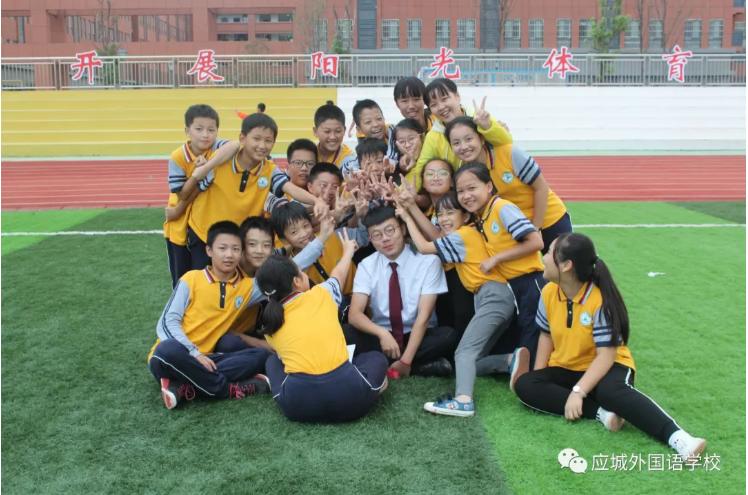
In order to effectively carry out quality education, promote the all-around development of students, and improve their comprehensive abilities, Yingcheng Huamow Foreign Language School's junior high school department successfully launched its seventh and eighth grade "Second Classroom" teaching activities after careful planning and intensive preparation.
Based on students' diverse interests, obvious strengths, and strong plasticity, and combining practical situations, school conditions, and actual situations, Yingcheng Huamow Foreign Language School's junior high school department launched art, sports, and literature courses as second classroom activities for seventh and eighth graders. Fourteen courses were offered, including tour guiding and oral expression, badminton, calligraphy, handicrafts, dubbing, Cantonese songs, table tennis, basketball, soccer, youth computer coding, music appreciation, art, dance, and aerobics. Students chose courses based on their own strengths and interests, with small class sizes.
1. Tour Guiding and Oral Expression: Speaking is an art. As the saying goes, "A single word of debate is heavier than nine cauldrons of treasure; a three-inch tongue is stronger than a million lions." The essence of oral expression is equal communication with the audience. The speaker speaks the truth, expresses genuine emotion, and inspires thought and even action in the audience. Oral expression is an art, but also a science.
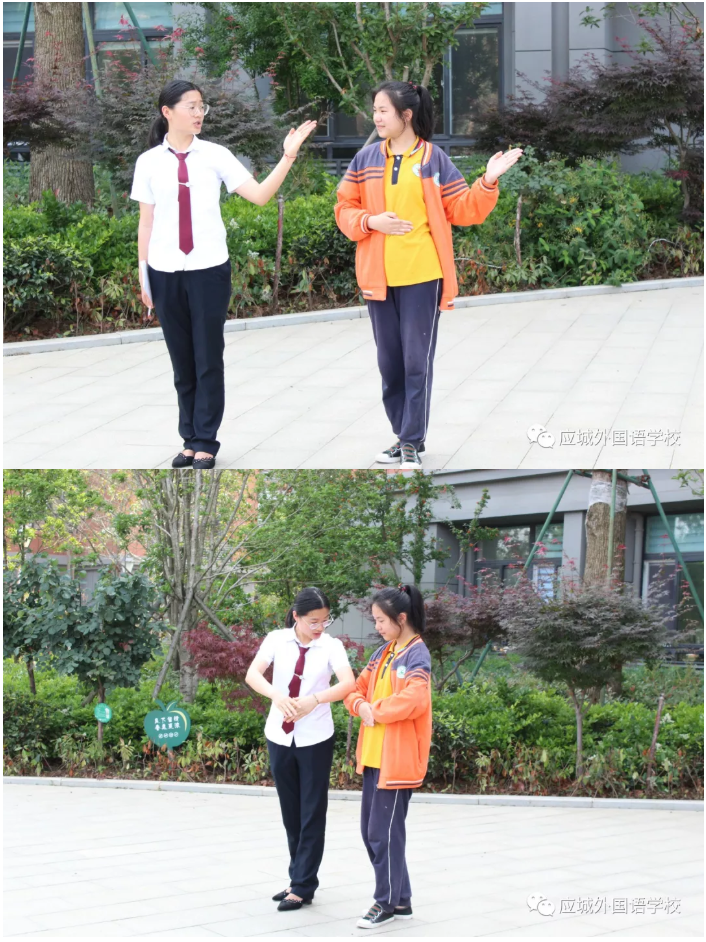
2. Computer Programming: This course aims to develop students' logical thinking abilities. Using program examples as a medium and code as a driver, it cultivates students' abilities to identify, analyze, and solve problems, enhancing their abstract logical thinking.
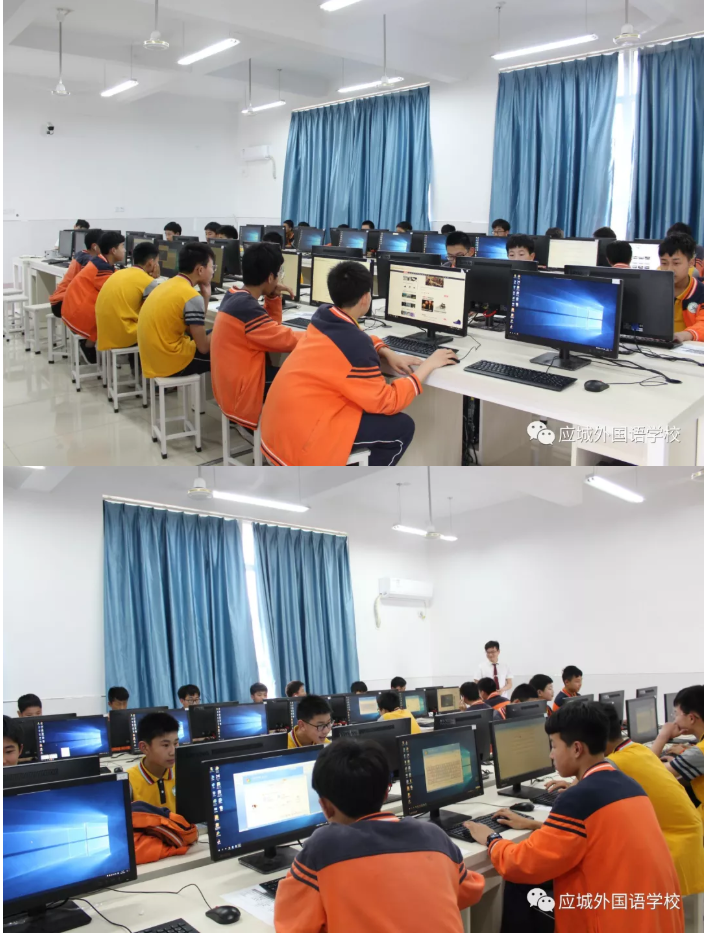
3. Dance: The process of learning dance is a process of cultivating perseverance and willpower. For students lacking flexibility and coordination, the training is very demanding, requiring unwavering persistence. Learning dance involves not only the contraction of bones and muscles, but also the comprehensive use of right-brain functions such as spatial perception and pattern recognition, providing the brain with many positive stimuli that benefit imaginative thinking and creativity.
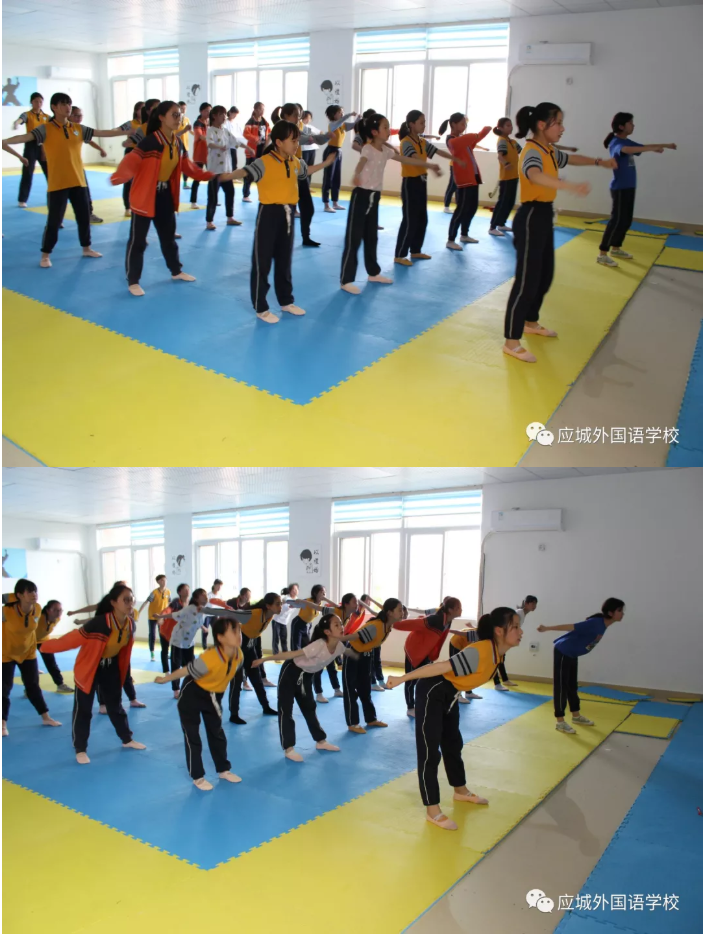
4. Art: You need a piece of paper and a pen to draw a smile expressing your current mood, allowing your heart to find better release. You can use the content of your drawing to release your feelings from the day, letting the content of the drawing experience everything you have experienced, helping it make various choices and decisions, and drawing the life you want. Draw your own original book, filled with your aspirations for life.
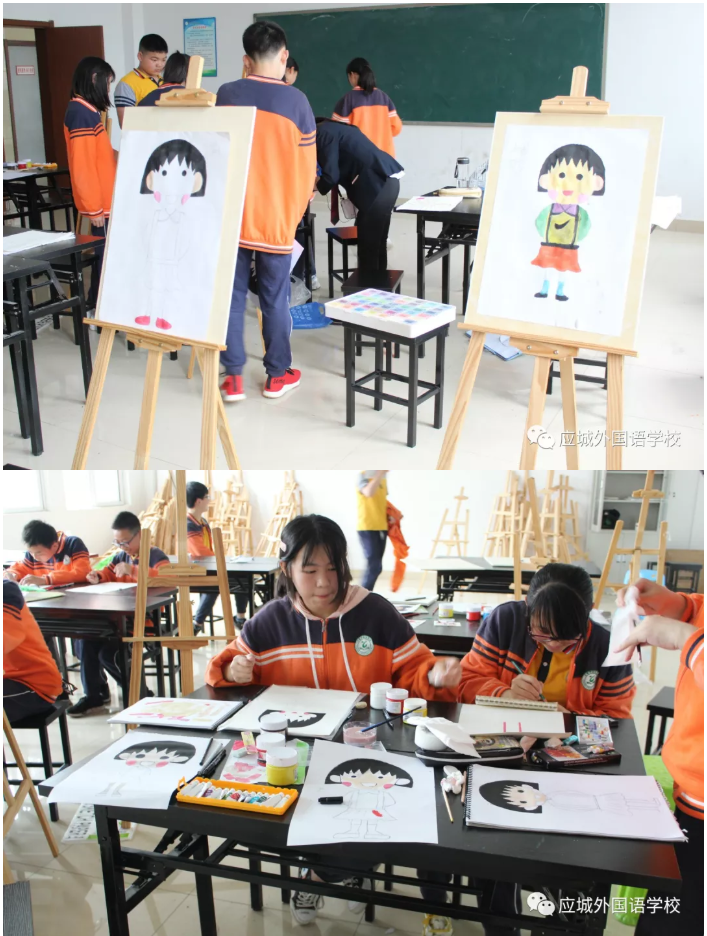
5. Soccer: Soccer originated from an ancient Chinese ball game called "cuju." It is a sport where two teams compete on the same field, primarily using their feet to control the ball. It is the world's most popular and widely played sport, known as the "world's number one sport." This course teaches students soccer skills in technique, tactics, and awareness, focusing on cultivating teamwork and a fighting spirit.

6. Badminton: The shuttlecock in flight exhibits various changes in speed, weight, height, distance, and spin. The ever-changing techniques of badminton make it a highly watchable sport. Badminton develops flexibility and coordination, improving both aerobic and anaerobic capacity. Competition strengthens the spirit of striving, cultivates willpower, and elevates intelligence, courage, and skill through competition and confrontation.
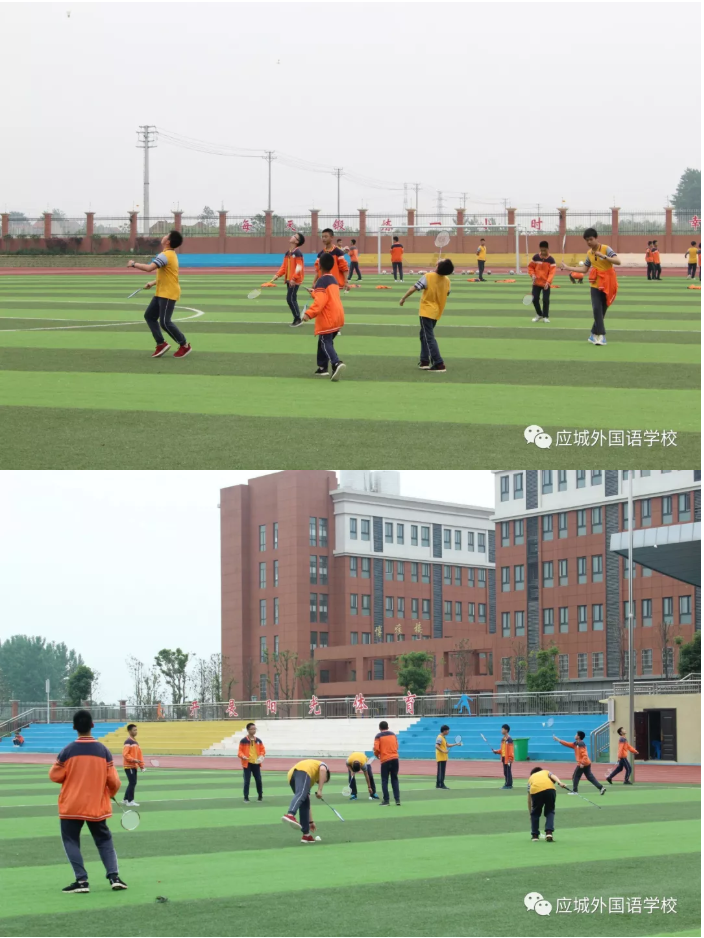
7. Table Tennis: China's national ball, table tennis is a popular sport worldwide. It is characterized by a small ball, fast speed, strong spin, and many variations. Regular participation in table tennis enhances physical fitness, promotes overall physical development, and cultivates qualities such as unity, friendship, intelligence, decisiveness, composure, and courage.
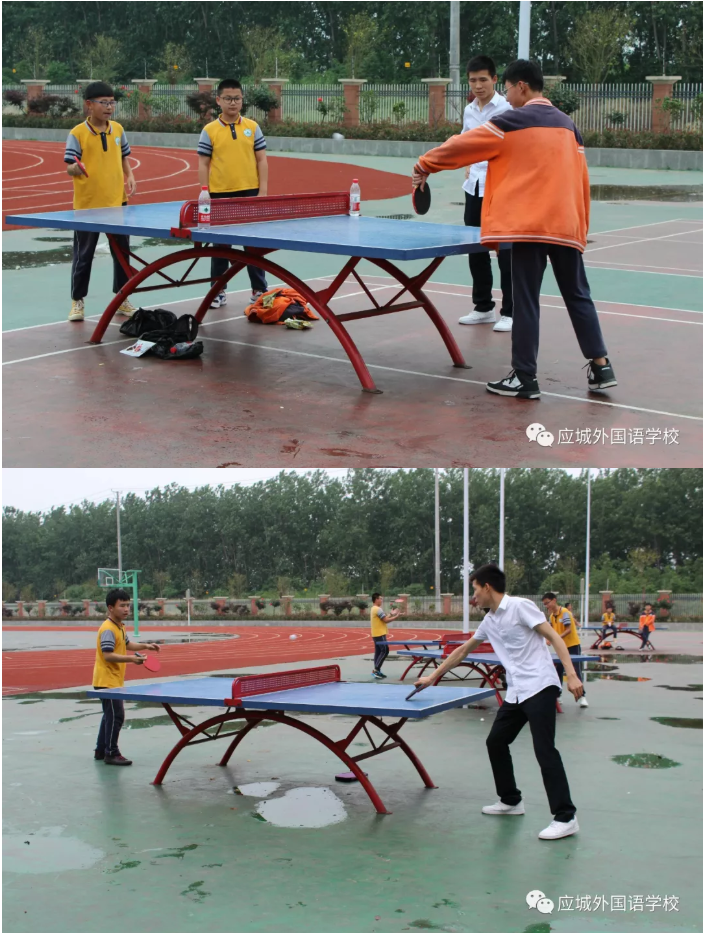
8. Aerobics: Aerobics is a sport that integrates gymnastics, dance, and music, using body exercises as its basic means, aerobic exercise as its foundation, and health, strength, and beauty as its main characteristics. It aims to improve health, shape the body, and provide entertainment, while also possessing high artistic value. It cultivates correct posture, shapes a beautiful physique, improves body coordination and flexibility, and allows for the creation of personalized exercise routines, leading to improved health, increased vitality, and mental well-being.
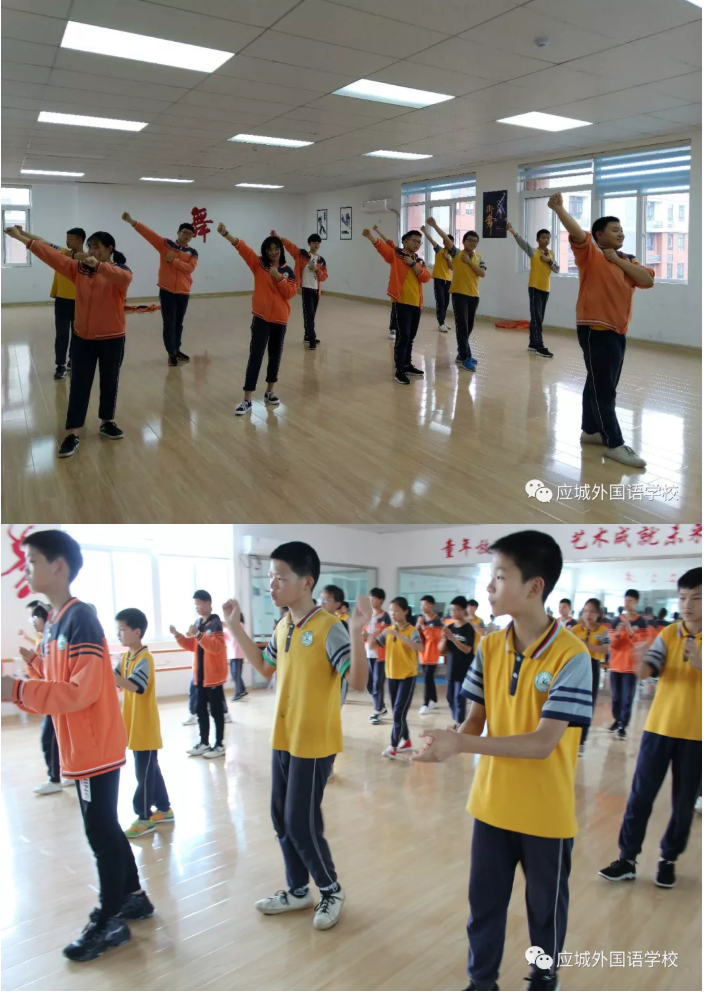
9. Basketball is a sport with strong technical, competitive, fitness, and collective aspects. Its methods and means are diverse, including running, jumping, stopping, turning, catching, passing, shooting, dribbling, grabbing, blocking, and various offensive and defensive combinations for individuals and the entire team. Participating in basketball promotes the overall development of physical fitness such as strength, speed, endurance, and agility, and improves the function of internal organs; it enhances concentration, judgment, and observation skills; and cultivates a positive, decisive, courageous, tenacious style and fighting spirit, fostering a brave and tenacious will.
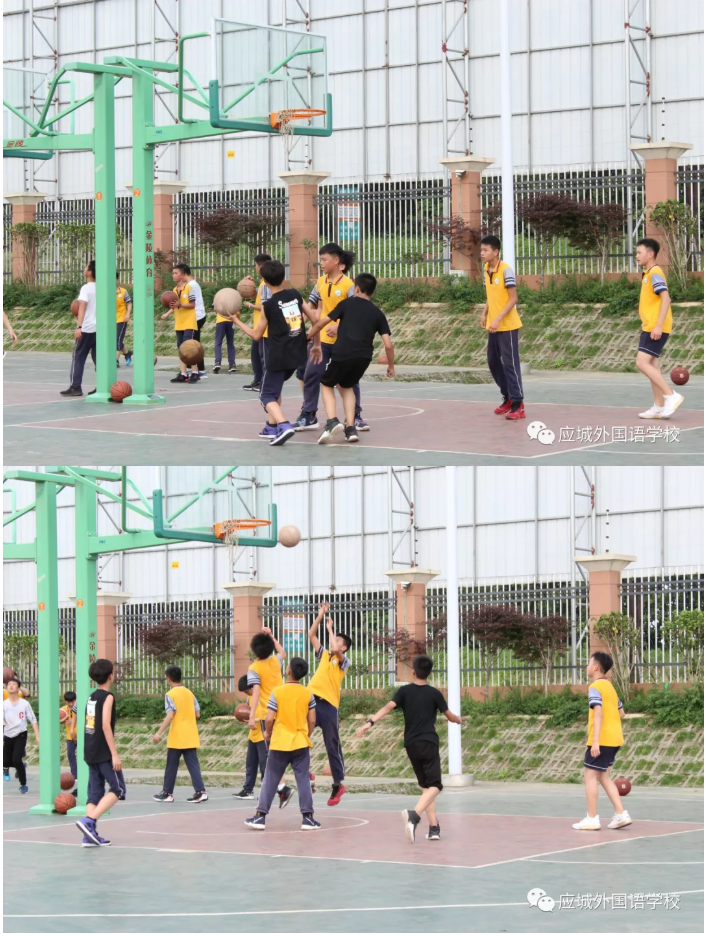
10 Cantonese Songs: Cantonese pop songs generally refer to popular songs from Hong Kong sung in Cantonese (Cantonese). Learning Cantonese songs helps understand the life, regional culture, and language characteristics of people in Cantonese-speaking areas. Cantonese songs are full of emotion; learning Cantonese culture allows for a better appreciation of Cantonese songs.
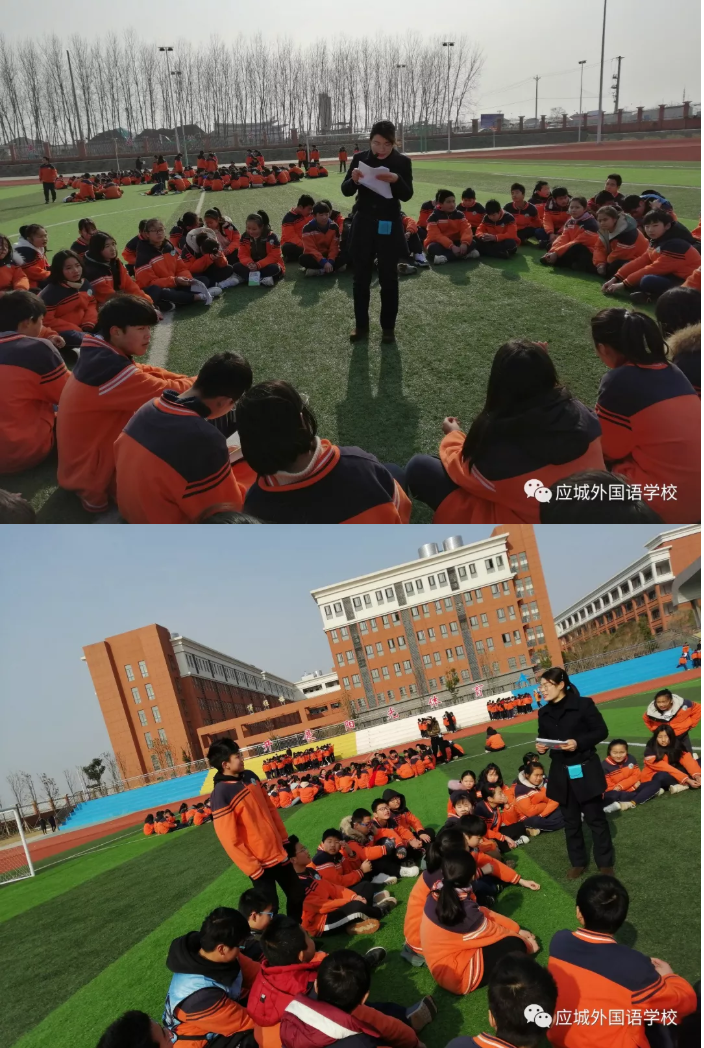
11. Handicraft Creation: The creative handicraft course is an innovation and optimization based on traditional art. With the aim of "learning through play and interactive participation," it uses highly participatory and fun course methods to comprehensively train students' hands-on abilities, cultivate creative thinking and imagination, and enhance their artistic aesthetic perception. Handicraft creation not only draws on and promotes traditional cultural skills but also combines with contemporary innovation, using new materials and production methods.
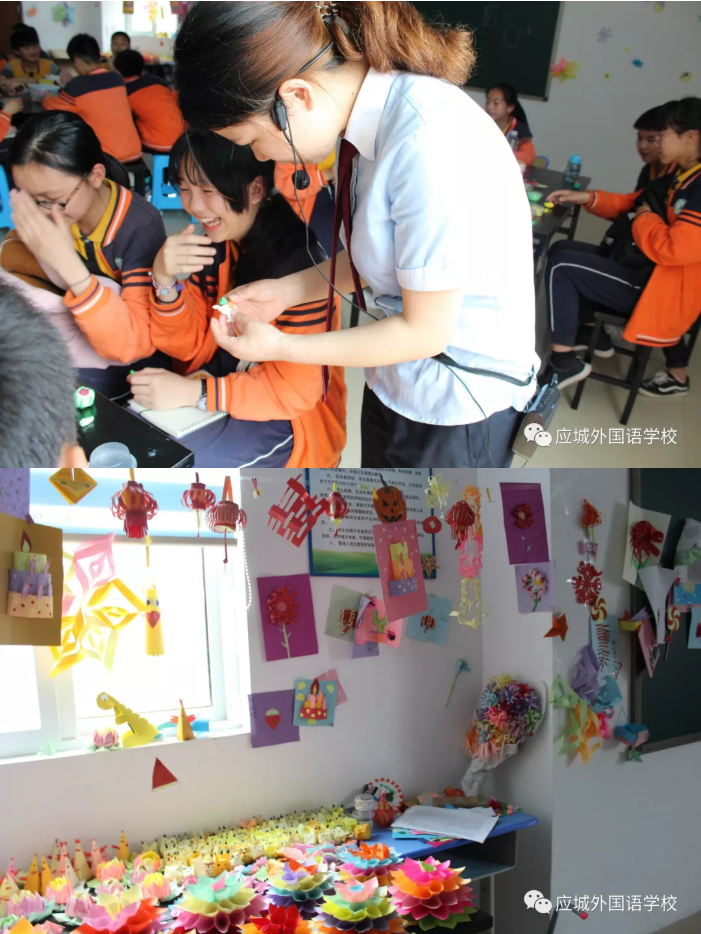
12 Calligraphy: Calligraphy uses Chinese characters as a medium to cultivate students' good writing habits, attitudes, and a certain aesthetic appreciation of Chinese characters. Through calligraphy classes, children's writing posture, pen-holding posture, and sitting posture are corrected; by learning the stroke order, strokes, size, position, overall shape, and structure of Chinese characters, children can learn calligraphy happily and write well! Practicing elegant and beautiful handwriting cultivates a high-quality second face; practicing elegant and beautiful handwriting increases confidence in achieving success.
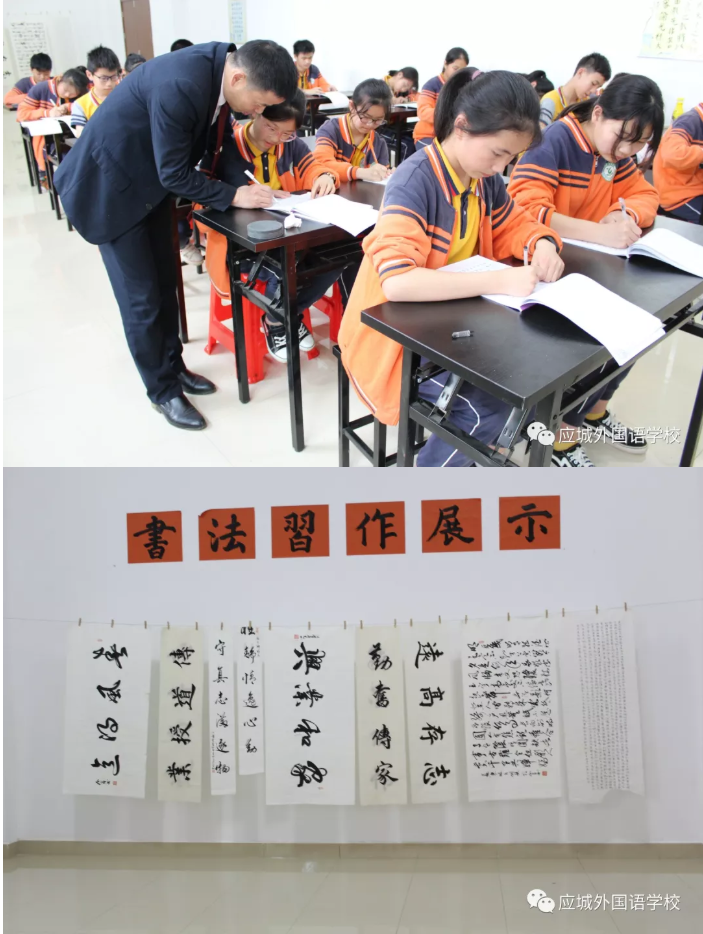
13. Music Appreciation: Through this course, students broaden their musical horizons. Students acquire knowledge of various musical forms and genres. It improves students' musical perception, imagination, comprehension, and artistic appreciation abilities. It imparts basic knowledge of music aesthetics, enhancing and cultivating refined aesthetic tastes.
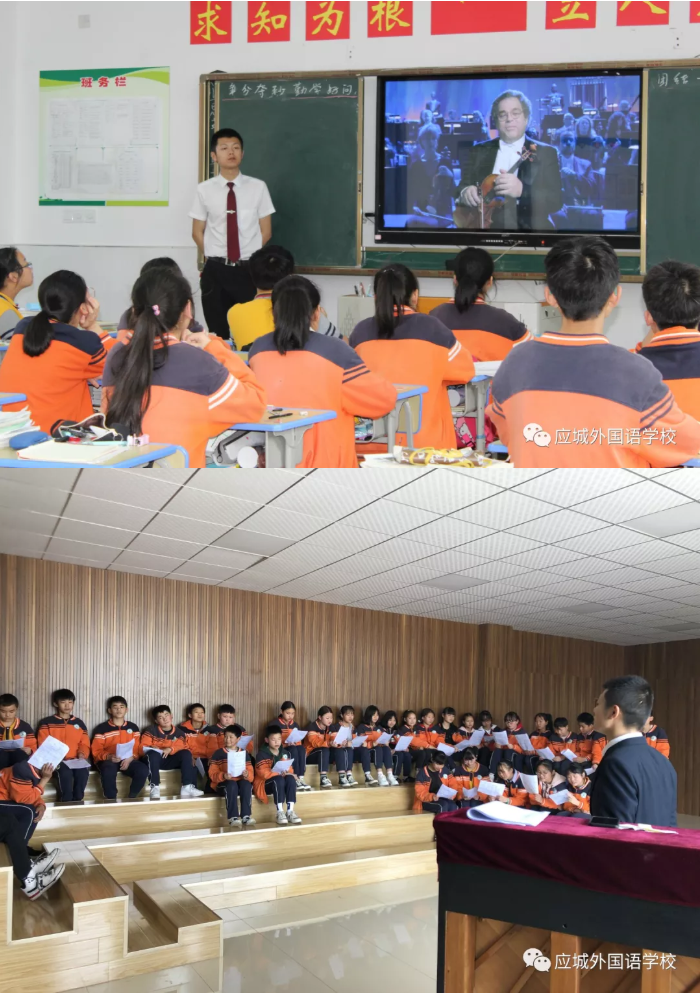
14. Dubbing Art: The organic combination of hearing and vision can achieve higher learning efficiency. Learning language through artistic enjoyment, especially using students' favorite programs for teaching, is undoubtedly the best way to enjoy learning and art.
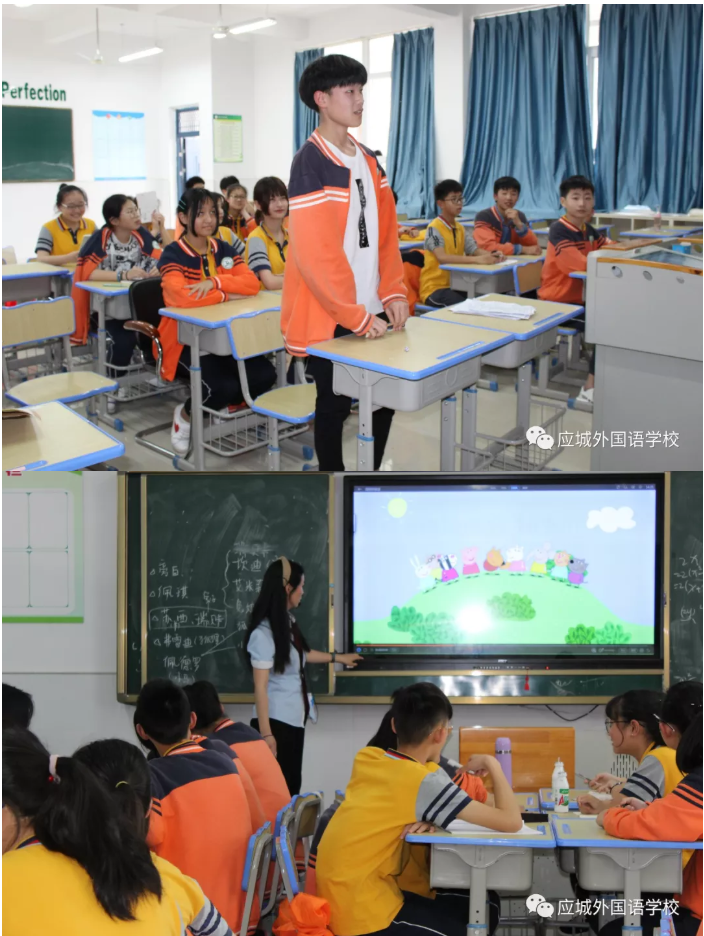
The second classroom activities of Yingcheng Huamow Foreign Language School's junior high school department have gradually formed the characteristics of "two combinations, three certainties, four possessions, and five adherences:"
Two combinations: First, the combination of subject courses and students' interests and strengths, complementing each other to form a whole, achieving progress in both fundamentals and special skills; second, the combination of professional teachers and the courses they teach, entrusting professional matters to professionals.
Three fixed elements: 1. fixed time, 2. fixed location, 3. fixed group members. Groups are formed based on students' interests and strengths.
Four essentials: 1. a teaching teacher, 2. a teaching plan, 3. a summary, 4. a results presentation.
Five adherences: 1. holding activities once a week, 2. teaching according to aptitude, 3. scientific teaching, 4. balancing popularization and improvement, 5. prioritizing safety.
The implementation of extracurricular activities greatly enriches students' after-school life. It is an important measure for schools to deepen quality education and comprehensively build a civilized and harmonious campus under the new era and situation. It is also an effective platform for cultivating and training students.
An important measure for schools to deepen quality education and comprehensively build a civilized and harmonious campus under the new era and situation. It is also an effective platform for cultivating and training students.
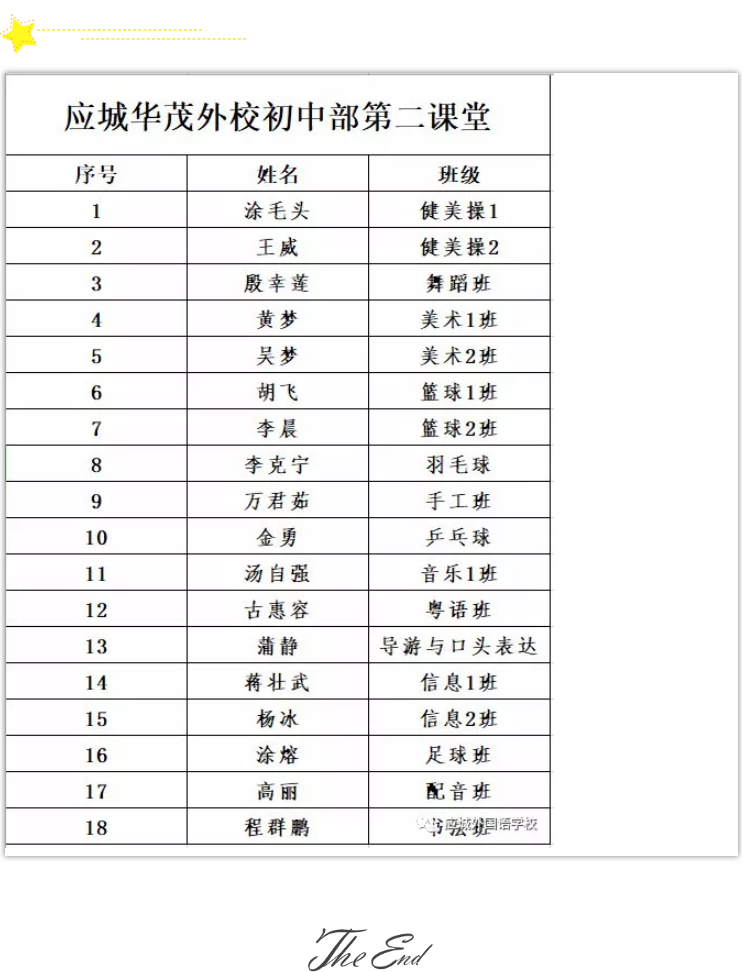
Keyword: The Second Classroom: Interest Leads to Growth - Junior High School Second Classroom Class Records
Related Information
Notice
-
Yingcheng Huamo Foreign Language School High School May Home-School Communication
Time:2019-05-31
-
Notice Regarding the Dragon Boat Festival Holiday
Time:2019-06-04
-
Notice on Teacher and Student Holiday Arrangements before and after the 2019 Junior Middle School Entrance Examination
Time:2019-06-13
-
Notice
Time:2019-06-24
-
Yingcheng Huamo Foreign Language School 2020 Repeater Class Enrollment Announcement
Time:2019-06-26
-
Yuncheng Huamo Foreign Language School's end-of-term exam and holiday schedule for this semester
Time:2019-06-26
-
Yingcheng Huamao Foreign Language School Primary School 2020 Autumn Enrollment Brochure
Time:2020-07-20
-
Yingcheng Huamo Foreign Language School Junior High School 2020 Autumn Enrollment Brochure
Time:2020-07-20
-
Yingcheng Huamao Foreign Language School 2020 Autumn Enrollment Brochure (Primary, Middle, and High School)
Time:2020-07-20
-
Yingcheng Huamo Foreign Language School High School 2020 Autumn Enrollment Brochure
Time:2020-07-21
-
Yingcheng Huamao Foreign Language School's 2020 First Annual College Entrance Examination Celebration Gala
Time:2020-07-23
-
Good News! Warm congratulations to Yingcheng Huamo Foreign Language School on the great success of its first college entrance examination!
Time:2020-07-23
-
Yingcheng Huamo Foreign Language School 2021 Retake Class Enrollment Announcement
Time:2020-07-31
-
Yingcheng Huamo Foreign Language School's 2020 First Annual College Entrance Examination 'Dark Horse' List
Time:2020-07-31
Campus Scenery
Teaching and Research
-
The Municipal Education Bureau and the Teaching and Research Office conducted a teaching inspection at our school.
Time:2018-12-13
-
Conference Guide for the First Xiaogan City Junior High School Chinese Youth Teacher Quality Competition and "Xiaogan Teaching Masters" Teaching Art Seminar
Time:2018-12-15
-
Our school held the second head teacher forum
Time:2018-12-17
-
The first Xiaogan City Junior High School Chinese Youth Teacher Quality Competition and "Xiaogan Teaching Masters" Teaching Art Seminar was successfully concluded at our school.
Time:2018-12-20
-
Mr. Wang Qingzhong, the principal of Hangzhou Huatai Middle School in Tianmen, was invited to give a special report on "Being a Good Teacher with Ease" to our school's teachers and staff.
Time:2018-12-22
-
Liu Chengde, secretary of the school Party committee, gave a study report on the Party Constitution to all the Party members of the school
Time:2019-01-09
-
Yingcheng City's 2019 Spring Festival "Book Fragrance Cup" Education Achievement Report Exhibition and Performance was passionately staged at our school
Time:2019-01-12
-
Our school's 2019 spring semester faculty training activity (1): "My Class Story" Head Teacher Forum
Time:2019-02-16
-
Our school's 2019 spring semester staff training activity (Part 2): General school supervisor and executive principal Liu Chengde gave a training theme report titled "A Group of People Can Go Further"
Time:2019-02-17
-
My Smart Classroom Teaching Forum: School-wide Faculty Training Activity (Part 3), Spring Semester 2019
Time:2019-02-17
-
The new semester's general staff meeting for the primary school proposed making every effort to improve the quality of education and teaching.
Time:2019-02-18
-
The primary school held a teacher's book sharing session
Time:2019-03-14
-
Speech by an outstanding teacher at the 2018-2019 academic year semester summary and commendation meeting
Time:2019-03-18
-
Understanding High-Efficiency Ecological Classrooms - Han Kai, Vice Principal of the Head Office
Time:2019-03-18
-
Entering the Minds of Students - Junior High School - Xu Huabin
Time:2019-03-27
-
Reading notes of "The Miracle of Classroom No. 56" - Elementary School Department, Liu Fang
Time:2019-03-27
-
My province has released a new college entrance examination reform plan
Time:2019-04-25
-
Representatives from the education, science, culture, health, and sports sectors of the municipal People's Congress visited our school for inspection and guidance
Time:2019-04-30
-
Experiencing Scientific Achievements and Feeling the Charm of Science - Some Teachers and Students from Our School Conducted Research and Study Activities at the Wuhan Science and Technology Museum
Time:2019-05-13
-
The teachers and students' congress of Yingcheng Huamao Foreign Language School emphasized: sticking to our original aspiration, carrying forward the past and opening up the future, striving for greater progress from a high starting point, and creating a new brilliant chapter for the school.
Time:2019-05-18
-
Good news
Time:2019-05-21
-
Honoring the Great Man's Hometown and Carrying Forward the Revolutionary Spirit - School-wide Party Members Conduct Revolutionary Tradition Education in Shaoshan and Ningxiang, Hunan
Time:2019-05-29
-
Yingcheng Huamao Foreign Language School 2019 Summer Staff Training (1): Opening Ceremony
Time:2019-08-27
-
Yingcheng Huamao Foreign Language School 2019 Summer Staff Training (II): Mr. Wu Jiafang, President of Hubei Provincial Association of Private Primary and Secondary Schools and Kindergartens, gave a special report
Time:2019-08-27
-
Yingcheng Huamao Foreign Language School 2019 Summer Staff Training (3) "My Class Story": Listening to Class Stories, Feeling the Happiness of Education
Time:2019-08-27
-
Continuous Improvement - Seventh New Teacher Training Course for Primary School
Time:2019-08-27
-
Yingcheng Huamo Foreign Language School Primary School held summer training assessment and a welcome party
Time:2019-08-27
-
Yingcheng Huamo Foreign Language School Teacher Training (5) Jingzhou Municipal Institute of Education Director Wang Youjun gave an academic report
Time:2019-08-28
-
Yingcheng Huamo Foreign Language School Summer Teacher Training (6) - Leadership Work Report
Time:2019-08-29
-
Life is education, education is life - Yingcheng Huamao Foreign Language School holds a meeting of life guidance teachers
Time:2019-09-02
-
Let Wisdom Call for Efficient Classrooms - Teacher Training (IV)
Time:2019-08-29
-
A Micro-Exploration of Chinese Language and Literature Group Reading Teaching
Time:2019-10-09
-
A Brief Discussion on Smart Classrooms
Time:2019-10-09
-
Huamao Foreign Language School Primary School "Sunshine Morning Reading + Running Exercises"
Time:2019-11-06
-
Classroom Reflections on 'Loyal Bones Lie Buried Everywhere Under the Green Hills'
Time:2019-11-12
-
To be a good teacher that students like
Time:2019-11-12
-
Three-pronged approach: cultivate the excellent, assist the weak, and ensure every student's growth and progress
Time:2019-11-12
-
Elementary English Teaching Notes
Time:2019-11-12
-
Games make art class more vivid
Time:2019-11-12
-
Self-study room, changed me
Time:2019-11-12
-
A Light for Myself
Time:2019-11-12
-
Our school held a mobilization meeting to learn from Hengshui No.2 Middle School
Time:2019-11-12
-
Midterm Exam | Home-School Cooperation, Witnessing Growth
Time:2019-11-14
-
The 2019 New Teacher Teaching Skills Improvement Training for Yingcheng City was held at our school
Time:2019-11-29
-
Yancheng High School's history exam preparation and teaching research activity was held at our school
Time:2019-11-29
-
School Education Towards 2035: A special report by renowned educator Li Xigui for school cadres and teachers
Time:2019-12-04
-
Our school held a study and exchange meeting to learn from experiences in Beijing, Tianjin and Hebei.
Time:2019-12-04
-
Inspire interest and cultivate confidence
Time:2019-12-04
-
Our school won first prize in the 6th Xiaogan City Primary and Secondary School Chorus Arts Festival.
Time:2019-12-23
-
Teacher Wu Wen's lesson video "Pulley" won the first prize in the province
Time:2019-12-26
-
Good news
Time:2020-01-07
-
Summary of online teaching for elementary school on June 28
Time:2020-06-29
-
Summary of Junior High Online Classes - 6.28
Time:2020-06-29
-
6.28 High School Online Course Summary
Time:2020-06-29
-
Summary of Junior High Online Classes - June 29
Time:2020-06-30
-
High School Summary - June 29
Time:2020-06-30
-
Summary of Junior High Online Classes on June 30
Time:2020-07-01
-
High School Summary - 6.30
Time:2020-07-01
-
7.1 High School Summary
Time:2020-07-02
-
7.2 High School Summary
Time:2020-07-03
News and Information
-
September monthly exam for junior high school students has successfully concluded.
Time:2018-10-10
-
A research group on the development of the education industry in Xiaogan City conducted a field research at our school
Time:2018-08-29
-
Mr. Ge Jinping, Vice Chairman of the Municipal Committee of the Chinese People's Political Consultative Conference, conducted a special research at our school
Time:2018-08-17
-
Yingcheng Foreign Language School Junior High School organized an English writing competition
Time:2018-10-09
-
Junior high school holds a on-site promotion activity for the "December 29th Class Management Operation Model" for Grade 7
Time:2018-09-19
-
The city's first junior high school physics excellent lesson competition was successfully held in our school
Time:2018-11-28
-
Junior high school holds mid-term teacher commendation meeting
Time:2018-11-30
-
Junior High School Mass Gymnastics Video: "Taking Flight with Dreams"
Time:2018-11-27
-
High school holds mid-term exam summary and commendation meeting
Time:2018-11-26
-
The Yingcheng City 2018 Primary and Secondary School Sports Meet was grandly held in our school
Time:2018-11-23
-
Building a Haven for Students' Hearts - An Interview with the Elementary School "Starry Little House"
Time:2018-11-21
-
The junior high school meticulously organized the mid-term examination
Time:2018-11-21
-
Home-School Partnership for Growth - Elementary School Parent Committee Representatives Visit Campus
Time:2018-11-19
-
High school holds parent committee meeting
Time:2018-11-13
-
The whole school staff and faculty singing competition was passionately performed
Time:2018-11-09
-
Elementary school holds a student on-site painting competition
Time:2018-11-05
-
Cheng Tao, secretary of the Yingcheng Municipal Party Committee, and others accompanied the provincial Party committee inspection team to inspect and guide our school.
Time:2018-12-07
-
Our school held a fire safety training seminar in autumn and winter
Time:2018-12-05
-
Our school held its first annual middle school autumn sports meet.
Time:2018-11-01
-
The primary school organized Young Pioneers to carry out a Comfort activities at Guoguang Nursing Home.
Time:2018-10-29
-
Glimpses of Parents' Visit to Campus in October, Junior High School
Time:2018-10-25
-
Elementary School's New Academic Year 'Master-Apprentice Pairing' Activity Launched
Time:2018-10-25
-
High school holds a dormitory head meeting
Time:2018-10-22
-
The elementary school held a mental arithmetic competition
Time:2018-10-22
-
Young Eagles Take Flight, Soaring High - Primary School Election of the New Session of Young Pioneer Leaders
Time:2018-09-20
-
The municipal food safety and hygiene inspection team came to our school for inspection and guidance
Time:2018-09-21
-
The primary school held a working exchange meeting for life teachers
Time:2018-09-23
-
Junior high school launches "Book Sea Debate" reading activity
Time:2018-09-28
-
The primary school held a monthly commendation and pre-National Day holiday education meeting
Time:2018-09-29
-
Separate meetings were held for teachers and students of the first and second grades of senior high school.
Time:2018-09-29
-
September Teaching and Research Activities Overview for Junior High School
Time:2018-10-11
-
Junior high school carries out a gratitude practice activity
Time:2018-10-17
-
Elementary school commendation of civilized classes and vanguard teams
Time:2018-10-13
-
The school flag guard held a flag-raising ceremony
Time:2018-11-27
-
The school's mid-term summary and commendation meeting for logistical work was held enthusiastically and grandly
Time:2018-12-10
-
Excerpts from the Elementary School Principal's Forum: "My Class Story"
Time:2018-12-13
-
Junior high school holds the second "Classic Reading" competition
Time:2018-12-13
-
Junior high school organized a morning reading observation activity
Time:2018-09-05
-
The city traffic police detachment came to our school to carry out a traffic safety publicity activity for "The First Lesson of the New Semester"
Time:2018-09-05
-
Junior high school held a new school year opening ceremony
Time:2018-09-09
-
Our school grandly held a celebration for the 34th Teachers' Day and the summary and commendation meeting for the past school year.
Time:2018-09-11
-
Full of Passion, Stepping into a New Academic Year - Our School Holds a Grand Opening Ceremony for the 2018-2019 Academic Year
Time:2018-09-16
-
Good news: Our junior high school teachers have achieved remarkable success
Time:2018-12-20
-
Junior high school holds a "I love reading classics" knowledge competition and "classic reading" award ceremony
Time:2018-12-21
-
Leaders from Tianmen Hangzhou Huatai Middle School visited our school for exchange and guidance
Time:2018-12-22
-
The primary school held a young teacher's classroom competition and open day for teaching.
Time:2018-12-27
-
Various classes organized activities to commemorate the 125th anniversary of Chairman Mao's birth
Time:2018-12-27
-
The elementary school held a New Year's Day parent meeting
Time:2019-01-02
-
Junior high school parent meeting
Time:2019-01-02
-
The primary school held a teaching forum and an awards ceremony for the young teachers' teaching competition
Time:2019-01-06
-
The high school organized a "Fun English Dubbing" activity
Time:2019-01-06
-
The school library is now officially open to all teachers and students.
Time:2019-01-07
-
Colleges and departments organized students to watch the "40th Anniversary of Reform and Opening Up Great Achievements Exhibition"
Time:2019-01-07
-
High school holds an English hand-copied newspaper competition
Time:2019-01-07
-
Elementary school teachers and students achieved excellent results in the China Children's Calligraphy, Painting and Photography Competition
Time:2019-01-08
-
Grade 11 classes pair up for end-of-term exam preparations
Time:2019-01-09
-
The Grade 8 students of the junior high school held a final exam oath-taking ceremony.
Time:2019-01-14
-
Selected letters from parents
Time:2019-01-15
-
Yingcheng Foreign Language School welcomes you
Time:2019-01-16
-
A letter to my life teacher
Time:2019-01-17
-
Seize the Present, Create the Future - Yingcheng Foreign Language School's 2019 New Year's Address
Time:2019-01-18
-
Holiday arrangements for this semester and the start of next semester
Time:2019-01-20
-
The primary school held a commendation ceremony for moral education, a pre-final exam mobilization meeting, and a winter vacation education activity.
Time:2019-01-20
-
The mobilization meeting for the integrated creation of Yingcheng City's urban integrated governance was successfully concluded at our school.
Time:2019-01-24
-
High school parent meeting
Time:2019-01-29
-
Junior High School Holds Eighth Grade Commendation and Opening Ceremony
Time:2019-02-23
-
Igniting Hope, Carrying Dreams - Elementary School Opening Ceremony
Time:2019-02-26
-
Yingcheng Foreign Language School 2018-2019 Second Semester Holiday Schedule
Time:2019-03-03
-
Guests from Xiaogan No. 1 Middle School visited our school to learn about our logistics management work.
Time:2019-03-05
-
Flash! Listen to the strong voice of education, the 2019 Government Work Report highlights education
Time:2019-03-05
-
Elementary School Commendation of Outstanding Young Pioneer Cadres
Time:2019-03-07
-
High school holds student commendation and summary meeting
Time:2019-03-07
-
The primary school held a fun competition to celebrate International Women's Day
Time:2019-03-07
-
School leaders and principals of various departments signed the "Safety Work Target Responsibility Letter"
Time:2019-03-12
-
Our school launched a "hand in hand" friendship activity with the city's special education school.
Time:2019-03-14
-
100-Day Sprint to Victory in the High School Entrance Examination - Our School Holds a Grand 2019 High School Entrance Examination 100-Day Oath-Taking Ceremony
Time:2019-03-15
-
Unwavering初心, forging ahead--Our school held a summary and commendation meeting for the last semester
Time:2019-03-17
-
Electronic version of Yingcheng Foreign Language School brochure
Time:2019-03-18
-
Our school's first international exchange student goes to study in Canada
Time:2019-03-18
-
Our school strengthens the safety management of the canteen to ensure the food safety of teachers and students
Time:2019-03-20
-
Yingcheng Foreign Language School 2019 Senior High School Entrance Examination 100-Day Oath-Taking Ceremony Video
Time:2019-03-22
-
Our school held a fire drill for teachers and students
Time:2019-03-22
-
Elementary school held a commendation meeting for the monthly exam and pre-holiday education meeting
Time:2019-03-26
-
Our school's teachers and students' fire drill activities were featured on CCTV's 'Oriental Time'
Time:2019-03-27
-
Overview of Senior High School March 'Learn from Lei Feng' Series of Activities
Time:2019-04-02
-
Junior high school held a commendation meeting for the March examination of Grade 8
Time:2019-04-04
-
The elementary school held an enrollment ceremony for the new Young Pioneers in the first grade.
Time:2019-04-09
-
Guests from Xiaogan City visited our school for inspection and exchange
Time:2019-04-13
-
Primary schools organized a viewing of the national security education class.
Time:2019-04-14
-
Notice
Time:2019-04-16
-
Junior high school flag-raising ceremony emphasizes: Cultivating reading habits and accumulating life wisdom
Time:2019-04-16
-
Elementary School Awards March 'Vanguard Squad' and 'Civilized Class'
Time:2019-04-18
-
Elementary school backbone teachers take the lead in participating in the high-efficiency ecological classroom standardization activity
Time:2019-04-18
-
The elementary school held a team meeting themed "Cherishing Life, Walking Together".
Time:2019-04-19
-
Teachers and students work together to create a clean and beautiful campus
Time:2019-04-19
-
Notice on Adjustment of Labor Day Holiday (May 1st)
Time:2019-04-19
-
The high school organized a study session on the new college entrance examination reform plan
Time:2019-04-24
-
High school meticulously organized the mid-term exam
Time:2019-04-24
-
The first campus football league of the primary school has come to a successful end.
Time:2019-04-24
-
The high school organized a study session on the new college entrance examination reform plan
Time:2019-04-25
-
The junior high school meticulously organized the mid-term examination
Time:2019-04-27
-
Junior high school carries out a gratitude practice activity
Time:2019-04-27
-
The elementary school successfully held its second on-site calligraphy and painting competition
Time:2019-04-30
-
The primary school held a health lecture on puberty for girls.
Time:2019-04-30
-
Expectations for young people in the new era: President Xi Jinping's six-point message (full speech attached)
Time:2019-05-05
-
Flower Sea Together, Youthful Affection - May Fourth Youth Day Outdoor Education and Friendship Activities for Young Teachers and Staff at Chu Zhen Garden
Time:2019-05-05
-
Mid-term summary and commendation meetings were held for each grade level in the elementary school.
Time:2019-05-05
-
May Fourth Spirit, Passed Down by Me
Time:2019-05-06
-
Everything you need to know about preventing drowning accidents is here
Time:2019-05-07
-
Not working hard is a waste of 12 years of life!
Time:2019-05-08
-
Junior high school holds a flag-raising ceremony themed "Emphasize labor, harvest happiness"
Time:2019-05-08
-
High school holds a flag-raising ceremony themed "Carry forward the May Fourth spirit and show the youthful vigor"
Time:2019-05-08
-
Junior high school holds a mid-term commendation meeting for ninth graders
Time:2019-05-09
-
The elementary school held a mid-term exam quality analysis and mobilization meeting for sixth graders.
Time:2019-05-13
-
High school launches "Excellent Reading" plan
Time:2019-05-13
-
Yingcheng Foreign Language School welcomes "little guests" - kindergarten children from the city visit the school in batches
Time:2019-05-15
-
Carrying forward the spirit of May Fourth and showing the youthful vigor - Senior High School holds a blackboard newspaper exhibition and evaluation
Time:2019-05-15
-
Senior High School Holds a Flag-Raising Ceremony on the Theme of "May's Warmth, Gratitude to Parents"
Time:2019-05-15
-
The elementary school held a commendation ceremony for the sixth grade mid-term exams
Time:2019-05-15
-
Junior high school holds a flag-raising ceremony themed "Study with Heart, Be Grateful to Parents"
Time:2019-05-15
-
The faculty and students of the entire school held a grand ceremony to celebrate the unveiling of Hubei Huamao Education Group Co., Ltd. and Yingcheng Huamao Foreign Language School.
Time:2019-05-16
-
Junior high school launches a high-efficiency ecological classroom standardization activity
Time:2019-05-16
-
The teachers and students' congress of Yingcheng Huamao Foreign Language School emphasized: sticking to our original aspiration, carrying forward the past and opening up the future, striving for greater progress from a high starting point, and creating a new brilliant chapter for the school.
Time:2019-05-18
-
High school holds a writing competition themed "Motherland in My Heart" and "Mom, I Want to Say to You"
Time:2019-05-20
-
The Second Classroom: Interest Leads to Growth - Junior High School Second Classroom Class Records
Time:2019-05-20
-
Junior high school holds a flag-raising ceremony themed "On the Dream Chasing Road, Through Wind and Rain"
Time:2019-05-21
-
Good news
Time:2019-05-21
-
High school students participate in the Hubei preliminary round of the National Chemistry Olympiad.
Time:2019-05-23
-
Notice to Parents Regarding the Prohibition of Students Bringing Mobile Phones to School
Time:2019-05-24
-
Honoring the Great Man's Hometown and Carrying Forward the Revolutionary Spirit - School-wide Party Members Conduct Revolutionary Tradition Education in Shaoshan and Ningxiang, Hunan
Time:2019-05-29
-
High school holds a flag-raising and award ceremony themed "Embrace the Sunshine, Love Life"
Time:2019-05-30
-
Junior high school held a flag-raising ceremony with the theme of "Time waits for no one, strive upward"
Time:2019-05-30
-
Yingcheng Huamo Foreign Language School High School May Home-School Communication
Time:2019-05-31
-
Our school held an art performance to grandly celebrate Children's Day.
Time:2019-06-03
-
Leaders from Wuhan Shengfan Electronics Co., Ltd. visited our school to inspect the site for the establishment of a women's basketball school.
Time:2019-06-03
-
The primary school held a speech contest titled "The Story Behind the Photo"
Time:2019-06-03
-
Set your sights high, let your dreams take flight | High School Flag Raising Ceremony
Time:2019-06-05
-
Promote a new civilized atmosphere and establish a positive class image
Time:2019-06-05
-
Senior high school held its second broadcast gymnastics competition
Time:2019-06-08
-
Famous singers Zu Hai and Geng Weihua led all teachers and students in a passionate performance of the school song MV "Flying Towards Dreams"
Time:2019-06-09
-
Primary school welcomes the city's educational research office's high-efficiency ecological classroom standardization acceptance
Time:2019-06-15
-
High school implements efficient ecological classroom standardization acceptance
Time:2019-06-16
-
Vice Mayor Zhao Hongfen inspected our school's high school entrance examination site
Time:2019-06-20
-
Singing at Huamao Foreign Language School - Junior High School's First Teacher Singer Competition
Time:2019-06-21
-
Good news
Time:2019-06-24
-
Yingcheng Huamao Foreign Language School, where dreams begin - student and parent interviews
Time:2019-06-26
-
The elementary school held a teacher summary meeting and enrollment examination meeting
Time:2019-07-02
-
Happy summer vacation, but remember to prevent drowning!
Time:2019-07-05
-
Yingcheng Huamo Foreign Language School 2019 Autumn High School Enrollment Brochure
Time:2019-07-08
-
A year of hard work, fighting for every second to reach the peak; a glorious June, chasing and surpassing each other to show our strength - Yingcheng Huamo Foreign Language School Junior High School Grade 3 Opening Ceremony
Time:2019-07-08
-
Warmly congratulate Yingcheng Huamo Foreign Language School High School on its outstanding achievements again!
Time:2019-07-10
-
Warmly congratulate Yingcheng Huamo Foreign Language School on its great success in the 2019 high school entrance examination!
Time:2019-07-10
-
Yingcheng Huamo Foreign Language School held its second autumn new student entrance examination.
Time:2019-07-18
-
Summer Learning Plan - For High School Students
Time:2019-07-20
-
Forge ahead to build brilliance, gather wisdom and intelligence to create a new chapter
Time:2019-07-22
-
A High School Student's Summer Vacation (Life Plan), Remember the "Nine Dos" and "Three Don'ts"
Time:2019-07-22
-
Yingcheng Huamao Foreign Language School Junior High School achieved excellent results and would like to share the good news with all the people in the city.
Time:2019-07-26
-
Recruitment brochure for first grade students at Yingcheng Huamao Foreign Language School
Time:2019-08-12
-
Our school held the fourth autumn new student entrance examination.
Time:2019-08-19
-
The high school held a welcome meeting for new high school freshmen.
Time:2019-08-20
-
Never forget the initial aspiration, build dreams in the apricot altar - Yingcheng Huamao Foreign School Primary School held a mobilization meeting for the pre-job training of newly recruited teachers
Time:2019-08-20
-
We are here for change - Primary School New Teacher Onboarding Training
Time:2019-08-20
-
One who learns from others can improve oneself - The Third Lesson of New Teacher Training
Time:2019-08-22
-
Yingcheng Huamao Foreign Language School Primary School 2019 Autumn Semester Notice of School Opening
Time:2019-08-24
-
Cai Fengzhen, Deputy District Head of Xiaonan District, and her entourage visited our school for an inspection.
Time:2019-08-29
-
School starts!
Time:2019-09-02
-
New Senior Three, New Journey - High School Holds Senior Three New Starting Point Research Examination
Time:2019-09-02
-
Initial Experience of Military Life - High School Freshman Military Training Opening Ceremony
Time:2019-09-02
-
The most beautiful thing is meeting you
Time:2019-09-02
-
Soaring high, striving for the future, heroes' passion writes a new chapter
Time:2019-09-05
-
Walking on the Road to Growth - Fourth Session of New Teacher Induction Training for Primary School
Time:2019-08-24
-
Take one step, then another, let your footsteps become excellent measures - The fifth lesson of the primary school teacher's induction training
Time:2019-08-24
-
A subtle influence, education without trace - The sixth lesson of the new teacher's induction training for the primary school
Time:2019-08-24
-
All teachers and students of Yingcheng Huamao Foreign Language School Junior High School gathered solemnly to welcome the new school year
Time:2019-09-26
-
The city-wide 2019 junior high school entrance examination ninth-grade teaching quality analysis meeting and the promotion meeting to improve teaching quality were held in our school
Time:2019-09-26
-
A special training session for village party organization secretaries and secretaries of party organizations in new social organizations across the city was held at our school.
Time:2019-09-26
-
Yingcheng Huamo Foreign Language School grandly held a celebration to mark the 35th Teachers' Day and commendation ceremony
Time:2019-09-26
-
Mid-Autumn Festival: Gratitude and Togetherness -- Various departments organized mooncake gatherings for students to express gratitude
Time:2019-09-27
-
Zhou Xinyuan, Party secretary and director of the Yingcheng Municipal Education Bureau, inspected our school
Time:2019-09-27
-
Our school held a grand opening ceremony and awards ceremony for the new school year.
Time:2019-09-27
-
The whole school held a singing competition "Sing for the Motherland, Fly to the Dream" to celebrate the 70th anniversary of the great motherland
Time:2019-10-08
-
Yingcheng Huamao Foreign Language School 2018-2019 Academic Year Junior High School Entrance Examination and Small Examination Celebration and Commendation Ceremony
Time:2019-10-16
-
Our school held a friendly basketball match with Jingling High School in Tianmen City.
Time:2019-10-25
-
Board members and school committee leaders led some cadres and teachers on a study tour to Hebei and Yichang.
Time:2019-10-25
-
Xiaogan City's school management "School-to-School" program visits our school
Time:2019-10-26
-
Parents enter the campus, working hand in hand to promote development
Time:2019-11-02
-
High School October Home-School Communication
Time:2019-11-02
-
Fang Yaowu, president of Xiaogan Private Education Association, visited our school for inspection and guidance
Time:2019-11-06
-
A delegation led by Zhu Jinjun, the principal of Xiaogan Technical School, visited our school for an inspection.
Time:2019-11-06
-
Teacher Yin, please check your banner!
Time:2019-11-06
-
Junior High School Girls' Meeting | Be a Happy Girl!
Time:2019-11-06
-
Junior High School Tug-of-War Competition│Youth Without Regrets, Full of Vitality!
Time:2019-11-06
-
Moral and Etiquette Accompany My Journey, the Atmosphere of the High School is More Positive: High School Holds Themed Flag-Raising Ceremony
Time:2019-11-06
-
Elementary School Creative Workshop | Appreciation of Phase 3 Works
Time:2019-11-12
-
Our school organized a study tour to Hengshui for 280 teachers and students.
Time:2019-11-12
-
Youth, flying with the national flag
Time:2019-11-14
-
Let safety and life go hand in hand
Time:2019-11-14
-
Searching for melodies at one's fingertips
Time:2019-11-14
-
Yingcheng Huamo Foreign Language School held a press station establishment and student reporter training conference
Time:2019-11-14
-
Junior High School Midterm Exam | Parents "Transform" into Exam Supervisors
Time:2019-11-16
-
Passion achieves dreams, mindset determines destiny - Inspirational speech by renowned speaker Liu Xiliang to our teachers and students
Time:2019-11-17
-
Parents of second-grade students at Yingcheng Foreign Language School
Time:2019-11-19
-
Fourth Grade Parent Meeting, Yingcheng Foreign Language School
Time:2019-11-19
-
Junior High School Flag Raising Ceremony | Ignite Youthful Aspirations, Write Youthful Dreams!
Time:2019-11-27
-
Sixth Grade Parent Meeting, Huamo Foreign Language School, Yingcheng
Time:2019-11-27
-
Year 1 Parents' Meeting, Huamo Foreign Language School, Yingcheng
Time:2019-11-27
-
Fifth Grade Parent Meeting, Huamo Foreign Language School, Yingcheng
Time:2019-11-27
-
Growth, Gratitude, Dreams | Third Grade Tenth Birthday Ceremony and Parent Meeting
Time:2019-11-27
-
Grade 712 Parent-Child Communication Meeting | Love is Around
Time:2019-11-27
-
Junior High School Midterm Commendation Ceremony | When you have lofty aspirations, do not let down your youth!
Time:2019-11-27
-
Elementary School Fourth Quarter Creative Works Appreciation
Time:2019-11-29
-
Huamow Foreign Language School Primary School Thanksgiving Parents Activity
Time:2019-11-29
-
A deep interpretation of the new college entrance examination reform plan was held for the first-year high school students.
Time:2019-11-29
-
Good news
Time:2019-12-02
-
Dancing Life
Time:2019-12-04
-
The Gathering of Strength, the Joy of Victory - A Record of the Senior High School Tug-of-War Competition
Time:2019-12-04
-
Gathering Strength, Building Campus Culture
Time:2019-12-04
-
A Strong Youth Makes a Strong China - High School Flag-Raising Ceremony
Time:2019-12-04
-
Youth without regrets
Time:2019-12-04
-
A daily journal helps me grow
Time:2019-12-04
-
Selected letters from parents
Time:2019-12-04
-
Reflections on Studying at Hengshui No.2 High School
Time:2019-12-04
-
Experiences and Reflections on Studying at Hengshui No.2 High School
Time:2019-12-04
-
Mom praised me for my sense of responsibility
Time:2019-12-04
-
Beautiful winter
Time:2019-12-04
-
Junior High School | A letter of gratitude from a parent warms the hearts of teachers and students!
Time:2019-12-10
-
Elementary School Creative Workshop Phase 5
Time:2019-12-10
-
Campus Style Show Episode 2 Video
Time:2019-12-10
-
Junior high school held a running race | Run, boy!
Time:2019-12-10
-
The 2020 College Entrance Examination registration process was successfully completed.
Time:2019-12-10
-
A world of sound, endless wonders
Time:2019-12-12
-
Wonderful, because we walk together | New Year's Day performance rehearsal in progress
Time:2019-12-12
-
Our school held an experience sharing meeting on "My Class Story" and "My Smart Classroom"
Time:2019-12-13
-
Gratitude Accompanies My Growth | Elementary School Young Pioneers Theme Team Meeting
Time:2019-12-14
-
Learning and teaching driven by examinations | December Exam Report of the Primary School
Time:2019-12-14
-
Book fragrance enriches the campus, culture nurtures the class | "Most Beautiful Classroom" class culture arrangement competition
Time:2019-12-17
-
Hengcheng Huamo Foreign Language School Junior High School's Second Running Competition (Full Video)
Time:2019-12-19
-
Let the flowers of kindness bloom in tolerance | Senior High School Themed Flag-Raising Ceremony
Time:2019-12-20
-
Elementary School "High-Efficiency Ecological Classroom" Second Round of Standard Acceptance!
Time:2019-12-20
-
Junior High School December Monthly Exam Commendation Ceremony | Be the Best You Can Be!
Time:2019-12-23
-
The provincial special inspection team fully affirmed our school's food hygiene work
Time:2019-12-23
-
Enhance Safety Awareness, Keep Fire Safety Knowledge in Mind - High School Themed Flag-Raising Ceremony
Time:2019-12-24
-
Our school will hold the "Fly to the Dream" 2020 New Year's Day performance.
Time:2019-12-24
-
Welcoming the New Year, Celebrating New Year's Day
Time:2019-12-26
-
Huamow Foreign Language School 2020 New Year's Day Arts Performance
Time:2019-12-26
-
Our junior high school successfully completed the Hubei Xiaogan City collective lesson preparation special inspection.
Time:2019-12-30
-
Patriotism begins with picking up the national flag
Time:2019-12-30
-
Our school held the "Flying Towards Dreams" 2020 New Year's Day Arts Performance
Time:2019-12-30
-
Actively prevent and control, win the battle against influenza prevention and control
Time:2019-12-30
-
Promoting Traditional Culture and Inheriting the Essence of National Treasures - "Opera Enters the Campus" Activity Comes to Our School
Time:2019-12-30
-
Grade 12 successfully completed the high school academic level qualification examination
Time:2020-01-03
-
New Year's Day Blackboard Newspaper Exhibition
Time:2020-01-07
-
Fun with Characters, Happy Accumulation - First Grade Character Recognition Competition
Time:2020-01-07
-
Parents express gratitude with a banner, school nurtures students' hearts
Time:2020-01-07
-
Make the most of your time and reap the rewards of growth
Time:2020-01-07
-
Banners fluttering, full of praise
Time:2020-01-07
-
Setting out on a dream, accumulating strength for a powerful breakthrough
Time:2020-01-08
-
Winter vacation, safety does not take a vacation
Time:2020-01-10
-
Seize the day, live up to the best years of one's life | Yingcheng Huamo Foreign Language School Primary School 2019 End-of-Term Summary Meeting
Time:2020-01-10
-
Junior High School Semester Exam | Rise and Fly, The Road is Under Your Feet!
Time:2020-01-10
-
High School January 2020 Home-School Communication
Time:2020-01-10
-
Finally, I've waited for you - It's the start of school for the high school students!
Time:2020-05-07
-
A letter to students and parents regarding the return to school for ninth graders!
Time:2020-05-09
-
The Provincial Party Committee's supervision team conducted a survey and supervision of our school's work on students' return to school and resumption of classes
Time:2020-05-11
-
Untiring efforts and forging ahead | Participating in the five-province excellent school joint examination in the third year of senior high school
Time:2020-05-11
-
High school conducts collective lesson preparation observation activities
Time:2020-05-12
-
Our school is conducting a second round of nucleic acid testing for on-campus personnel.
Time:2020-05-12
-
Unbreakable Love and Responsibility - Yingcheng Huamo Foreign Language School Creates Highly Efficient Online Teaching
Time:2020-05-12
-
May 20, we are waiting for your return!
Time:2020-05-14
-
The primary school's general faculty meeting stressed: establishing the school through morality, governing the school by law, implementing scientific management, and governing the school strictly.
Time:2020-05-15
-
A teacher's conference and the Senior 3
Time:2020-05-19
-
The best 520, and finally, the best you have arrived!
Time:2020-05-21
-
Our school's Grade 12
Time:2020-05-21
-
Children's Day Activities
Time:2020-05-23
-
Our school held a quality analysis and examination preparation mobilization meeting for the third-year senior high school students' second unified examination.
Time:2020-05-26
-
June 1st Children's Day Special | Children's Hearts Soar, Dreams Take Flight -- [Calligraphy and Painting Section]
Time:2020-05-27
-
June 1st Children's Day Special | Children's Hearts Soar, Dreams Take Flight -- [Recitation]
Time:2020-05-28
-
June 1st Children's Day Special | Children's Hearts Soar, Dreams Take Flight -- [English Version]
Time:2020-05-28
-
June 1st Children's Day Special | Children's Hearts Soar, Dreams Take Flight -- [Music and Dance Section]
Time:2020-05-28
-
Our school's college entrance examination physical examination has been successfully completed.
Time:2020-05-28
-
Strengthening safety education to prevent drowning - A letter to parents
Time:2020-05-31
-
Reviewing the past and looking to the future: How to continuously improve online classes - A High School Teacher Conference
Time:2020-06-05
-
Our school's college entrance examination volunteer application simulation exercise has been successfully completed
Time:2020-06-05
-
Riding the momentum of victory against the epidemic, chasing the extraordinary achievements of July!
Time:2020-06-11
-
Cybersecurity awareness is crucial; be wary of scams.
Time:2020-06-11
-
Announcement of the list of candidates for the 2020 Yingcheng City College Entrance Examination special program for children of medical personnel on the front line of the COVID-19 epidemic prevention and control
Time:2020-06-19
-
Building a 'Warm Heart Bridge' for Home-School Co-education - A Record of Three Rounds of Home Visits to High School Students
Time:2020-06-22
-
With Gratitude, We Forge Ahead | Yingcheng Huamao Foreign Language School Primary School Holds End-of-Term Summary Meeting
Time:2020-07-04
-
Kindergarten Transition | Campus Visit!
Time:2020-07-07
-
Leaders Zhao Hongfen, Yang Maocai, and others inspected our school's preparations for the college entrance examination.
Time:2020-07-07
-
Riding the wind and waves, facing the Gaokao, Huamo students soar towards their dreams
Time:2020-07-10
-
High school parents donated epidemic prevention materials to our school
Time:2020-07-14
-
Spring is in the air, and the students are back! Our high school students from grades 10 and 11 have returned to school.
Time:2020-07-14
-
Xu Changbin, deputy secretary of the CPC Yingcheng Municipal Committee and mayor, visited our school for inspection and guidance
Time:2020-07-20
-
462 ninth-grade students from our school successfully participated in the high school entrance examination.
Time:2020-07-23
-
Wu Jie, the vice mayor of Xiaogan City, visited our school for inspection and investigation
Time:2020-07-23
-
Yingcheng Huamao Foreign Language School's 2020 First Annual College Entrance Examination Celebration Gala
Time:2020-07-23
-
Good News! Warm congratulations to Yingcheng Huamo Foreign Language School on the great success of its first college entrance examination!
Time:2020-07-23
-
Our school's Gaokao celebration was a complete success
Time:2020-07-25
-
Warmly congratulate Yingcheng Huamo Foreign Language School on the great success of its first college entrance examination
Time:2020-07-25
-
Yingcheng Huamao Foreign Language School's 2020 First College Entrance Examination Elite List
Time:2020-07-31
-
Yingcheng Huamo Foreign Language School achieves outstanding results in the 2020 Junior Middle School Entrance Examination
Time:2020-08-15


